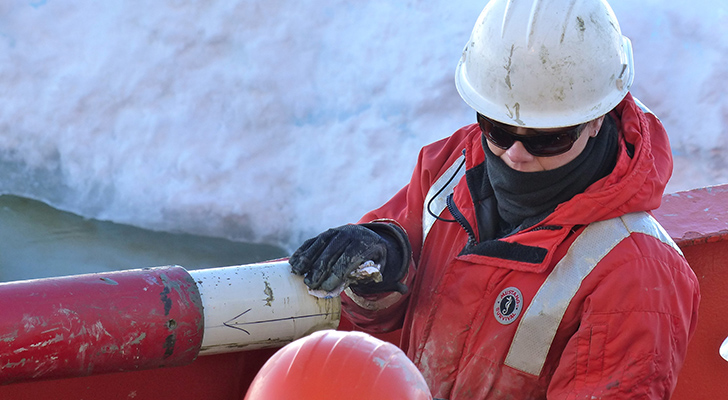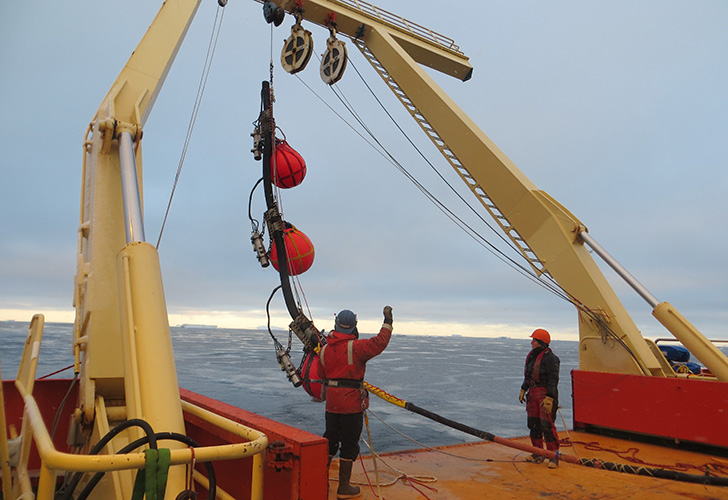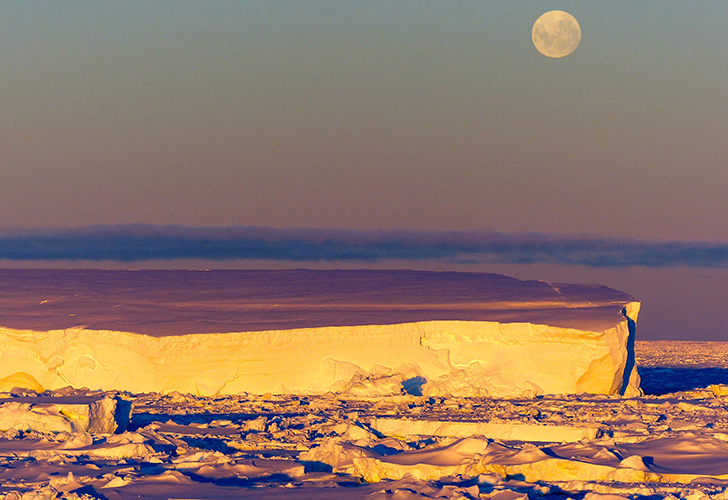TAMPA, Fla. (Dec. 13, 2017)- The world’s largest ice sheet may be less stable than previously thought, posing an even greater threat to Florida’s coastline. The first-ever marine geologic survey of East Antarctica’s Sabrina Coast, published this week in Nature, concludes that some regions of the massive East Antarctic Ice Sheet have been sensitive to climate change for millions of years. Much like the West Antarctic Ice Sheet, this region of the East Antarctic Ice Sheet is grounded below sea level and local glaciers are experiencing ice mass loss due to ocean warming.

Amelia Shevenell, PhD, associate professor at the USF College of Marine Science, recovers sediment cores from the Sabrina Coast, East Antarctica.| Photo by Steffen Saustrap, The University of Texas at Austin
“Antarctica may seem far away
from Florida, but all Floridians should care about what is happening in
Antarctica,” said co-lead author Amelia Shevenell, PhD, associate professor at the University
of South Florida College of Marine Science, Tampa. “As ice melts, global sea levels rise. Most
of Florida is at or several feet above sea level. We are already seeing the
effects of rising seas caused by melting ice sheets and ocean warming. There is
enough ice in our study region alone to raise global sea level by as much as 15
feet. This, in isolation, would be catastrophic to Florida.”
Shevenell, co-author Sean Gulick,
PhD, research professor at the University of Texas at Austin, and their collaborators
used marine seismic technology and ocean sediments to reconstruct the evolution
of the East Antarctic Ice Sheet in the Sabrina Coast region over the past 50 million
years. Their research found that during past warm climates, when atmospheric
temperatures and carbon dioxide concentrations were similar to or slightly
higher than today, the East Antarctic Ice Sheet was much wetter and more
unstable than it has been in the more recent past, when global climates were
generally cooler.

Researchers deployed marine seismic technology from the back of an icebreaker near Antarctica's Sabrina Coast. The equipment captured images of the sea floor, including geological formations created by the ice sheet, allowing the scientists to reconstruct how glaciers in the area advanced and retreated during the past 50 million years. | Photo by Sean Glick, The University of Texas at Austin
“Today, a majority of Antarctica's ice mass loss occurs when warm ocean waters melt ice shelves and glaciers from below. Our records of surface-meltwater production during past warm climates indicate that in the future, Antarctica will also experience ice melt from above, as air temperatures warm and carbon dioxide increases,” said Shevenell. “Thus, we might expect regional glaciers to become more unstable as atmosphere and ocean temperatures warm. This observation suggests that existing climate and ice sheet models likely underestimate East Antarctica’s contribution to global sea level rise."
The research was funded by the National Science Foundation (NSF), which manages the United States Antarctic Program.

Sunset and moonrise over the ice | Photo by Steffen Saustrap, The University of Texas at Austin
Story by Tina Meketa, University Communications and Marketing